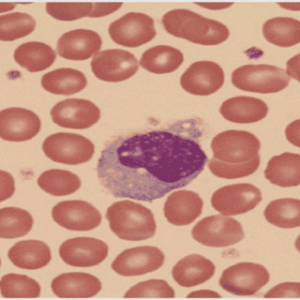(Downloads - 0)
For more info about our services contact : help@bestpfe.com
Table of contents
I Biochemical Reaction Networks: A Review
1 Context and Motivation
1.1 Features of Dynamical Models in Systems Biology
1.2 Network models of biological systems
2 Biochemical Reaction Networks: Syntax
3 Biochemical Reaction Networks: Semantics
3.1 Classical chemical kinetics
3.2 Stochastic chemical kinetics
3.3 Stochastic vs deterministic models
4 Executable Biology: Computational models of Biochemical Reaction Networks
4.1 Petri Nets
4.1.1 Motivation
4.1.2 Qualitative Petri Nets
4.1.3 Quantitative Petri nets
4.2 Rule-based modeling and the Kappa language
4.2.1 Rule-based modeling
4.2.2 The Kappa language: Syntax and Operational Semantics
4.2.3 The Kappa language: Stochastic Semantics
II Model reduction
5 Prototyping genetic circuits using rule-based models
5.1 Motivation
5.2 A Kappa model of the -phage decision circuit
5.2.1 Example: Kappa model of CI and CII production
5.3 Model Approximation using Michaelis-Menten-like reaction schemes
5.3.1 Validity of the Michaelis-Menten enzymatic reduction in stochastic models
5.3.2 Generalized competitive enzymatic reduction
5.3.3 Operator site reduction
5.3.4 Fast dimerization reduction
5.3.5 Top-level reduction algorithm
5.4 Results and Discussion
5.4.1 Results: reduction of the -phage decision circuit
5.4.2 Conclusion and future work
6 Tropical Abstraction of Biochemical Reaction networks with guarantees
6.1 Introduction
6.2 Definitions and Motivating Examples
6.2.1 General Setting and Definitions
6.2.2 Motivating example: Michaelis-Menten
6.2.3 Motivating example: A DNA model
6.3 Model reduction using conservative numerical approximations
6.4 Error estimates of tropicalized systems using conservative numerical approximations
6.4.1 Tyson’s Cell Cycle Model
6.5 Comparison with existing methods
6.6 Conclusion and outlook
III Modelling storage and growth
7 Effects of cellular resource storage on growth
7.1 Introduction
7.2 Review of the Weisse cell model
7.2.1 Overview
7.2.2 Nutrient Uptake and Metabolism
7.2.3 Transcription
7.2.4 Competitive Binding
7.2.5 Translation
7.2.6 Growth and cellular mass
7.2.7 Model parameters
7.3 A scaling procedure for modelling nutrient storage in the cell
7.3.1 Motivation
7.3.2 Definition
7.3.3 Examples
7.3.4 Storage capacity in the Weisse model
7.4 The Growth Rate is an emergent property of the model
7.5 The Single Cell model
7.5.1 The effects of metabolite storage on exponential growth rate
7.5.2 Metabolite storage and adaptation to environmental fluctuations
7.5.3 Environmental dynamics and resource storage strategies
7.6 The Ecological perspective
7.6.1 Motivation
7.6.2 Experiment setup: a mixed population model in a fluctuating environment174
7.6.3 Results
7.7 Conclusion
8 Abstractions for cellular growth: towards a new Petri net semantics
8.1 Motivation
8.2 Split-Burst: towards a piecewise-synchronous execution of Biochemical Reaction Networks
8.2.1 Max-parallel execution semantics of Petri Nets
8.2.2 Piecewise-synchronous execution semantics
8.3 Linear Reaction Networks
8.3.1 Growth rate as an emergent property
8.3.2 Synchronous execution
8.4 Possible Applications
8.4.1 Approximation of system dynamics
8.4.2 Synchronous Balanced Analysis
8.5 Conclusion and future directions
9 Conclusion and future directions
9.1 Contributions
9.2 Future works



